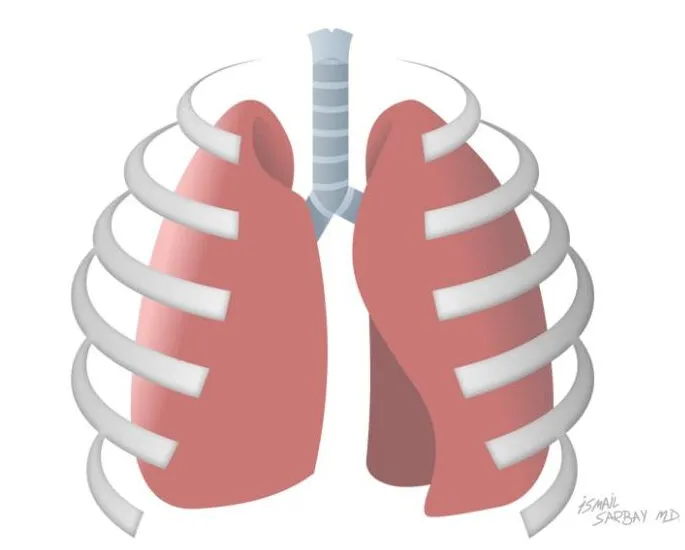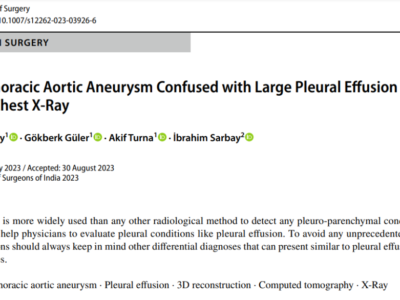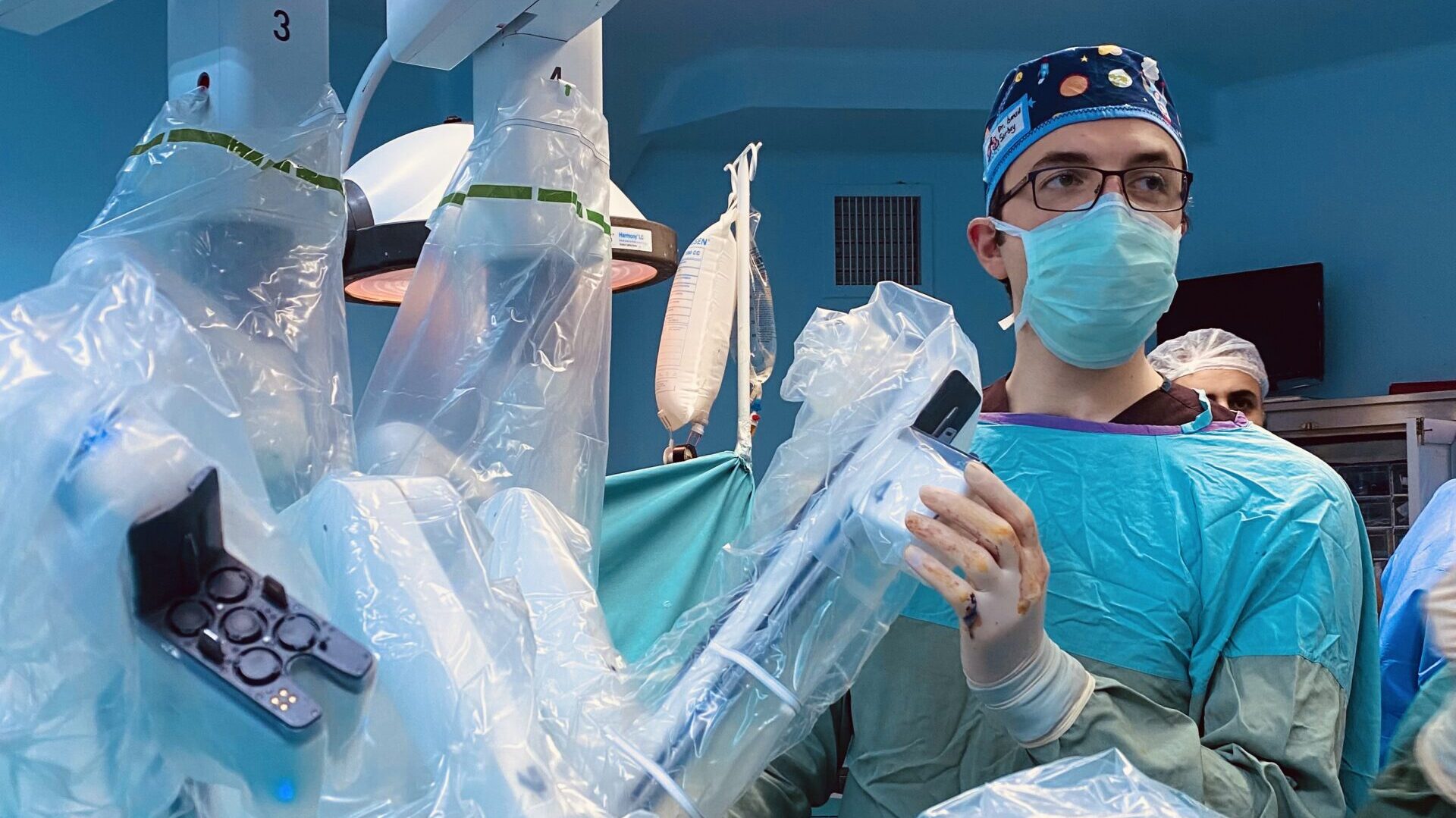You can access to view-only version of our paper via clicking here.
Our case was a dramatic example of the potential risks of insufcient evaluation of intrathoracic conditions. Any attempt to sample or drain pleural fuid without further investigation could lead to possible rupture of the giant aneurysm and could end fatally.
Physical examination should be performed for all patients presenting with respiratory symptoms and it should be followed by radiological imaging if necessary. X-Ray is more widely used than any other radiological method to detect a pleuroparenchymal condition. If an opacity is seen on a chest X-ray, the diferential diagnoses should be reviewed prior to any intervention, and carefully evaluated
via US or CT scan imaging. It is possible to penetrate the liver, stomach, or spleen due to the elevated diaphragm, to puncture any vascular structures or malformations, and to cause pneumothorax by confusing consolidation with pleurisy.
In conclusion, a comparison of consecutive chest X-Rays may reduce the chance of any unprecedented condition but, as in our case, there is still a risk of a life-threatening situation inside that opacity. Therefore, it is highly recommended to investigate the patient’s background and earlier imaging thoroughly and perform a thoracic US or CT scan for patients suspected to have pleural efusion, especially with any reported pathology of the chest in medical history




